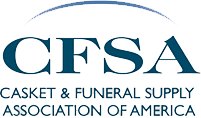
The evolution of the funeral business in the United States has taken some basic turns, creating a sometimes difficult transition for many funeral directors. The industry has gone from serving multiple needs of the community, as was the case in the early 1800s, to families today having multiple choices on how to honor their loved ones.
My grandfather was a very serious man who was a Quaker and a farmer. He owned several hundred acres but was able to plow only half of those acres with a horse and the assistance of my father. My grandfather and his father did the same on that very farm. As tractors became more readily available, my father was constantly advising my grandfather to come to terms with change. He resisted for years, but finally gave in. He was then able to farm all of his acreage. His profits rose and his overall costs declined per acre. My fondest memory of “Pop Duel” was watching him dress up like Abe Lincoln (remarkable resemblance) and showing off his beloved Ford tractor at the Woodstown, New Jersey, 4th of July parades.
The early horse and carriage has evolved into the latest in automotive technology and design. For the death care industry, costs of these vehicles can be quite impressive. For example, a Chrysler First Call Caravan now runs close to $65,000.00. The Lincoln and Cadillac Hearses are easily in excess of $100,000.00. Limousines are just as costly and depreciate just as quickly. The market for used vehicles is large and active. With the advancement in technology comes the rising cost of doing business.
With an increasing number of families choosing cremation, funeral directors are again faced with a decision that will have a lasting impact on how they operate. In a recent CANA study, the US cremation rate was 43.2% in 2012 and is projected to be 48.8% in 2017. This accounts for over 1,000,000 cremations per year. For every 10 families that walk through a funeral home’s doors, about half will choose cremation. Are they being treated the same as a graveside service or are funeral directors subcontracting the cremation? But would they ever subcontract a graveside service? I imagine that question gets a resounding “no.”
Cremation families want, as they should, to know where the cremation takes place and who handles the cremation. Their thoughts are no different than a graveside family wanting assurance that their family member is being taken care of as the funeral home hearse transports their loved one to the grave site.
Over the past several years, an increasing number of funeral homes have built a crematory next to the chapel. Often, the two are connected so families can witness the cremation along with a memorial service. Many facilities are able to add a cremation system to an existing building or chapel that they already own.
Having a $100,000.00 plus Lincoln or Cadillac Hearse can cost you more than the price of a cremation system. While hearses will depreciate over seven years, a cremation system will depreciate over 25 years – and often be operable for many years beyond that. Simply put, a cremation system is a much better investment; it generates profit, and expands business opportunities.
An average funeral home can acquire a first-rate cremation system, complete with associated equipment, shipping costs, and connection of facilities, for less than a first-rate hearse. Of course there are costs involved in the operation of the cremation system, as there are with a hearse. Do you need to pay monthly monitoring fees? Not if the equipment is reliable. Are operators expensive? Not usually, and training can take place during the startup of the system. Often the operator is responsible for many other tasks and can even be the funeral director.
But a funeral director is paying those costs, plus a considerable markup, to the facility that has a cremation system that half of your families will utilize. If it is servicing more than 50 cremations per year, on average it is not only exceeding what it would cost to own and operate its own cremation system, but it is also actually building someone else’s business.
Does a funeral home want to farm all of its acreage, or does it want to plow on as it has for several generations?

